
Israeli Strikes on Natanz: A Satellite Imagery Analysis
In a dramatic escalation of tensions in the Middle East, Israel launched a large-scale preemptive strike on Iran during the night between Thursday and Friday, targeting critical military and nuclear infrastructure, most notably the Natanz nuclear facility. The operation, which involved over 200 aircraft and more than 330 missiles aimed at approximately 100 targets, is being called one of the most significant military actions in the region in recent years.
Key Targets: Natanz and Parchin Nuclear Facilities
The core of the Israeli operation focused on Iran’s highly sensitive nuclear sites. Among them was the uranium enrichment facility in Natanz, located in central Iran. This facility has long been at the center of international concerns over Iran's nuclear ambitions. Another key site targeted was Parchin, southeast of Tehran, believed by Western intelligence to be a hub for nuclear weapons research.
Israeli Prime Minister Benjamin Netanyahu justified the operation by stating that Iran has amassed enough enriched uranium to produce up to nine nuclear bombs, and that recent intelligence showed Tehran accelerating its nuclear weapons program. He declared the Israeli action as necessary to "prevent a threat to the existence of the State of Israel."
Satellite Imagery Confirms Extensive Damage
High-resolution satellite imagery report provided by OnGeo Intelligence shows significant destruction at the Natanz enrichment complex. Before-and-after images reveal scorched infrastructure, craters from precision strikes, and plumes of smoke rising from multiple impact zones.
These satellite images provide the first independent confirmation of the extent of Israel’s precision strike capabilities and the strategic damage inflicted on Iran’s nuclear infrastructure.
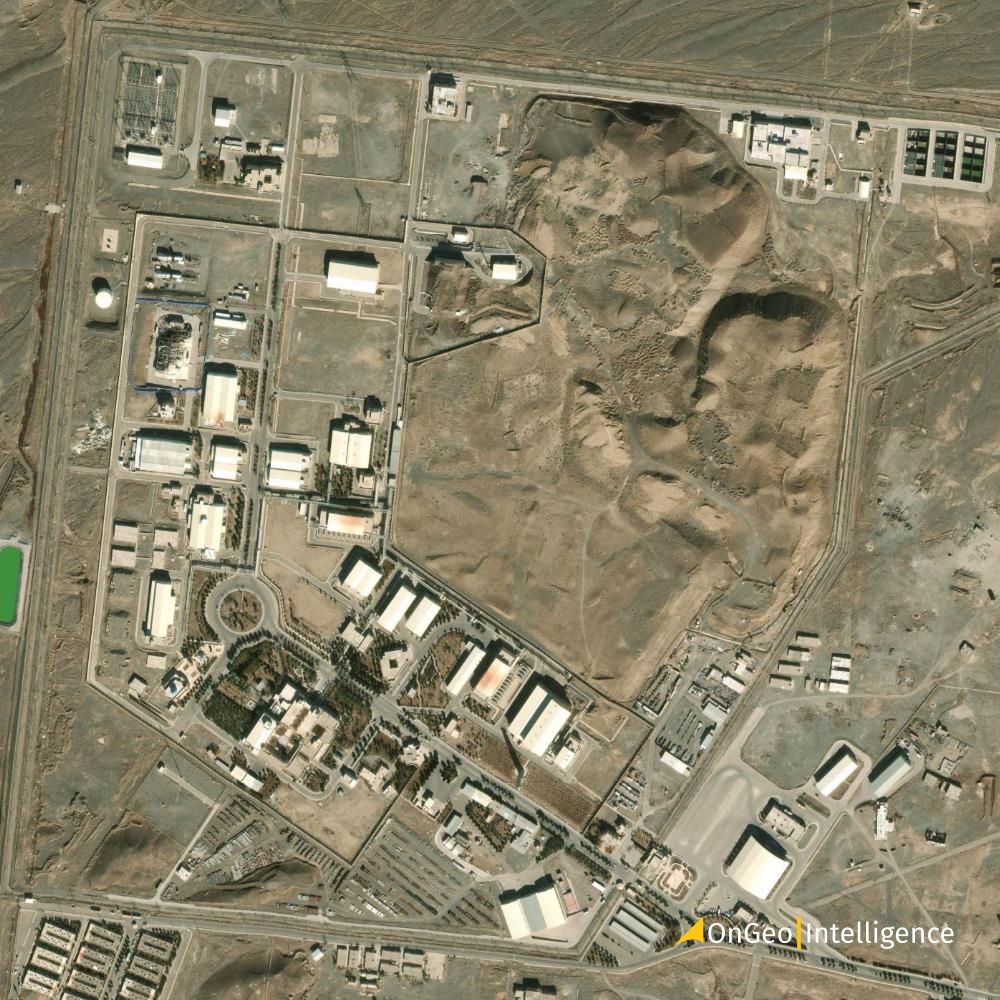
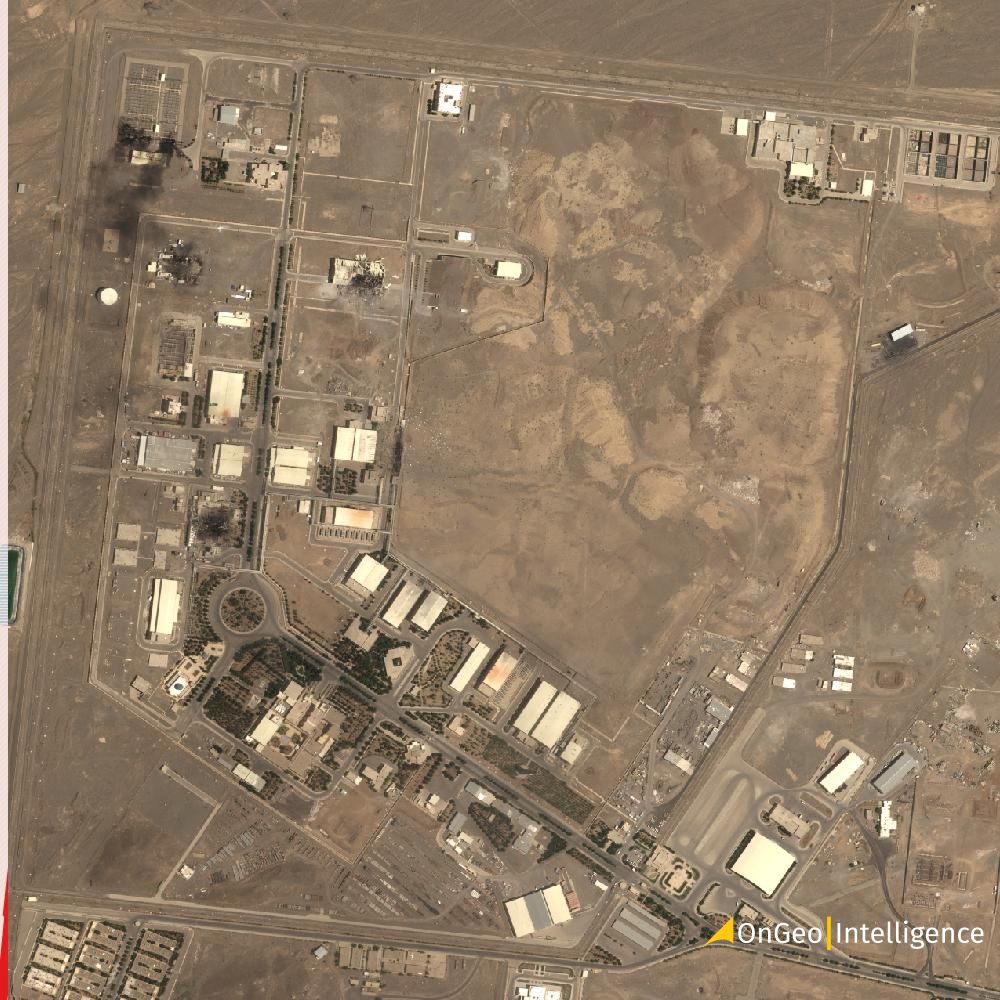
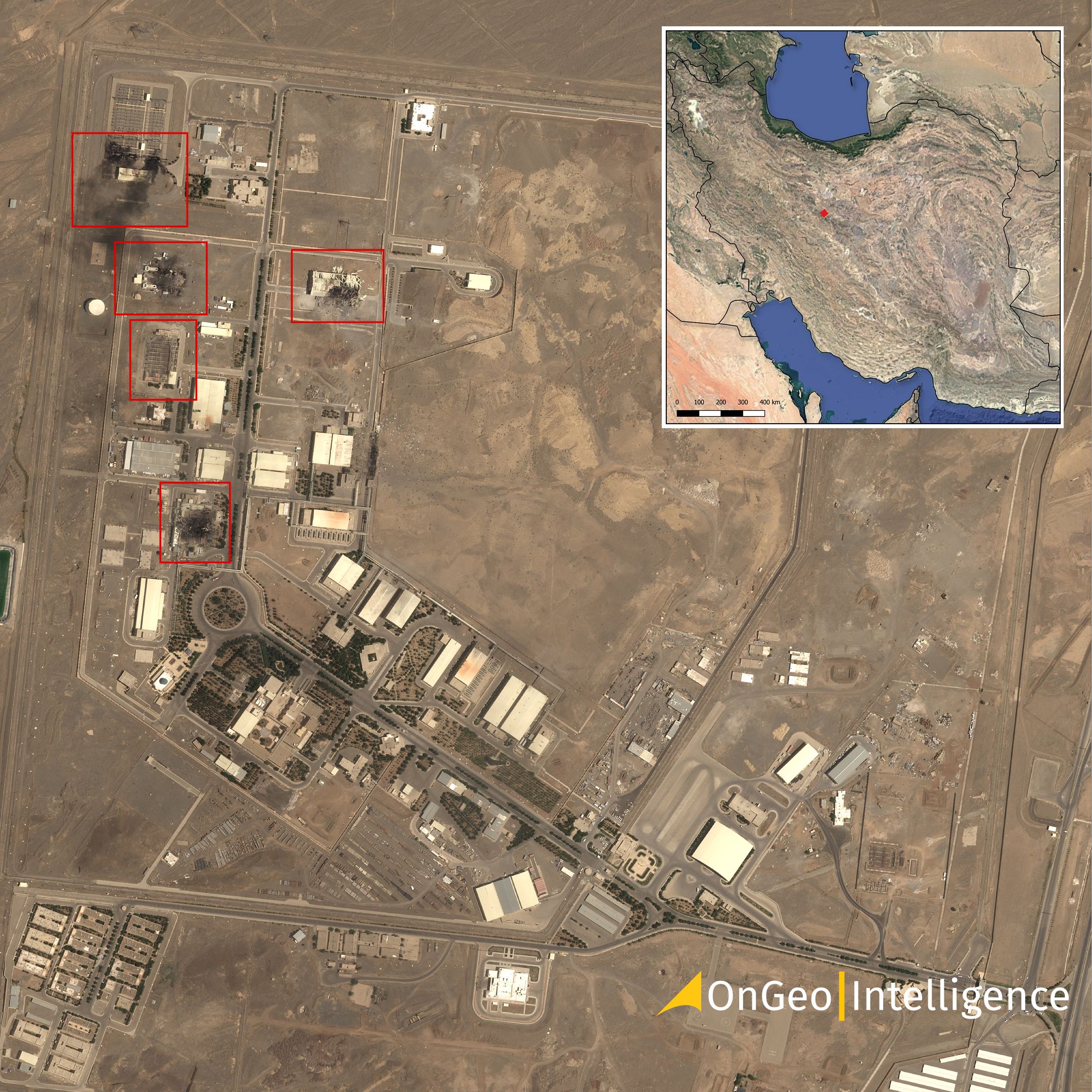
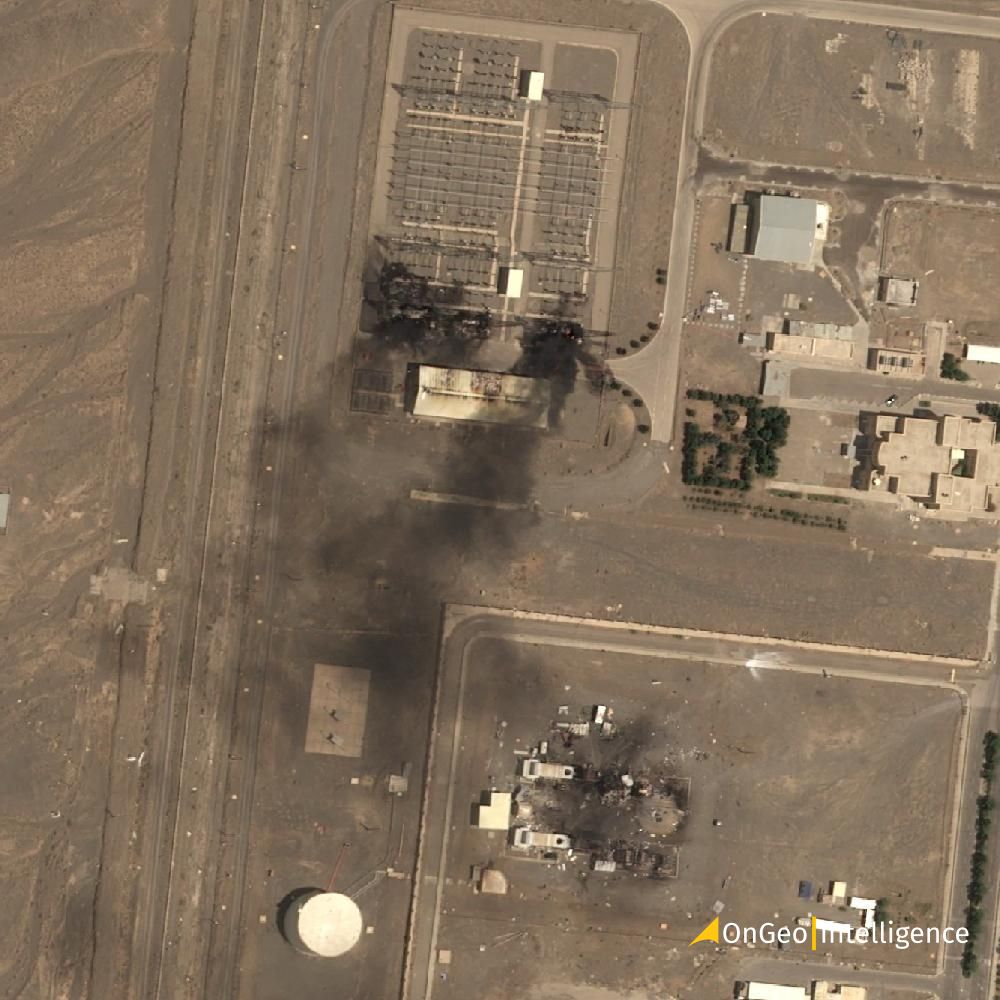
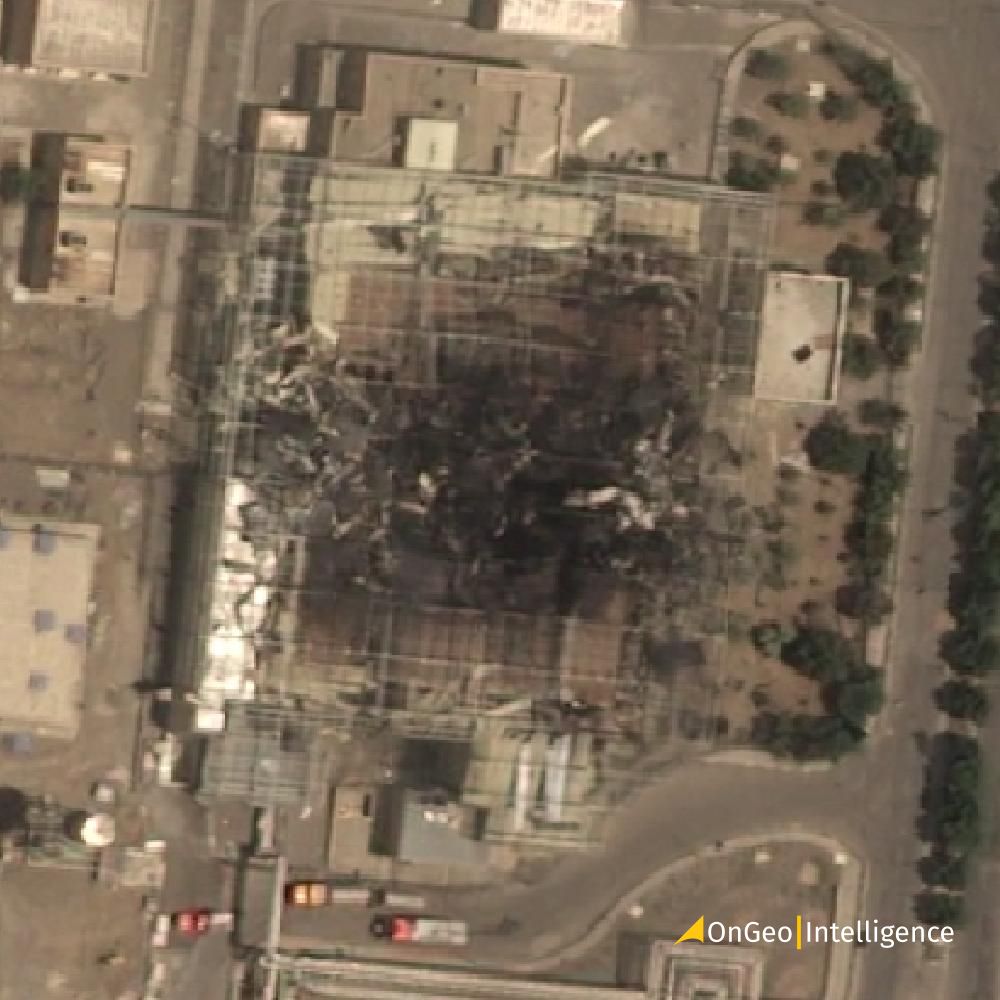
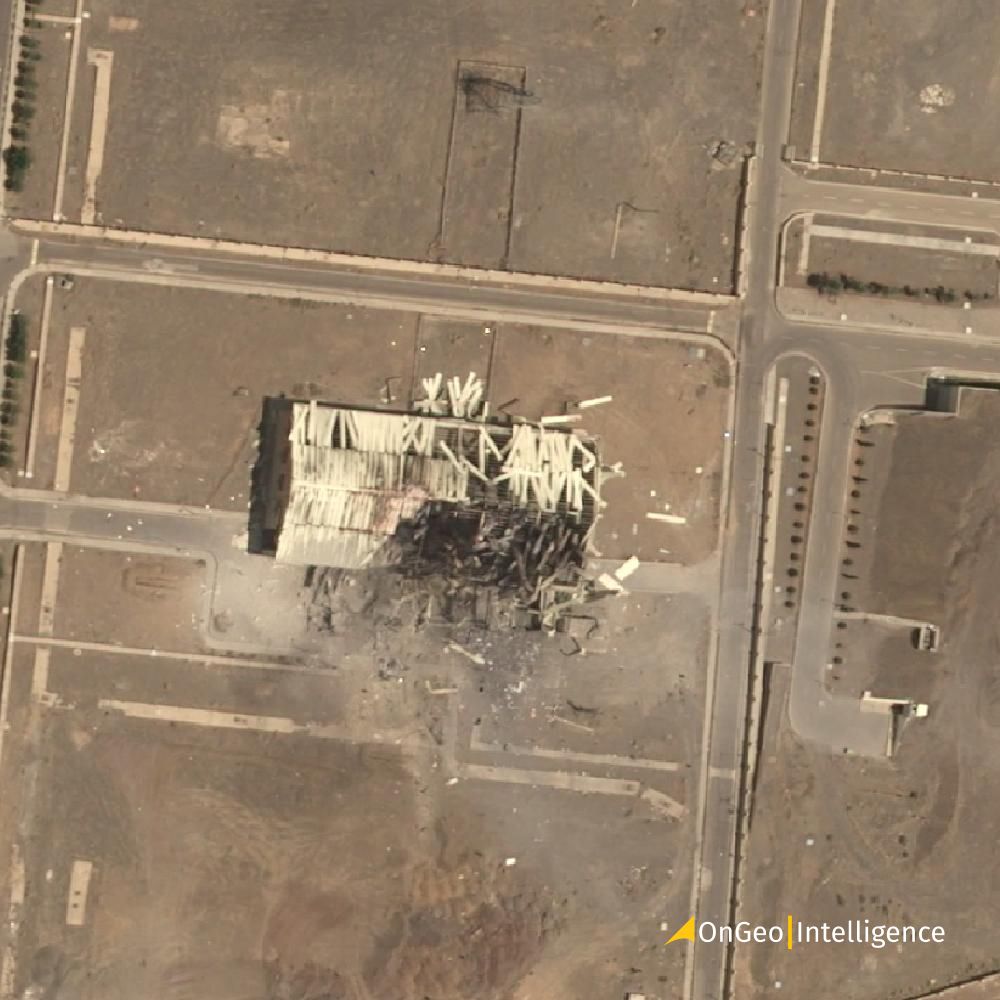
View the full satellite imagery report
Satellite Imagery Report: Natanz Nuclear Facility
PDF (1) and data (2) with high-resolution images available

Iranian Response and "Red Flag of Revenge"
In retaliation, Iran launched dozens of drones toward Israeli targets. While most were intercepted by Israeli air defenses, the scale and speed of the Iranian response indicate a serious escalation. In a symbolic gesture, the "Red Flag of Revenge" was raised over a prominent mosque in Iran, a rare and ominous symbol historically signaling an intention for large-scale retaliation.
Additional Israeli strikes reportedly hit military bases near Tabriz, the former capital of Persia, suggesting that the Israeli strategy goes beyond just targeting nuclear infrastructure.
High-Profile Casualties and Leadership Decapitation
Reports from sources including Axios indicate that the Israeli strikes may have eliminated Iran’s entire military general staff. One confirmed casualty was Major General Hossein Salami, the commander-in-chief of Iran’s Islamic Revolutionary Guard Corps (IRGC). Several top nuclear scientists were also reportedly killed, marking a devastating blow to Iran’s military and scientific leadership.
Global and Regional Fallout
The conflict has triggered airspace closures in Israel, Iran, Iraq, and Jordan. Israel shut down Ben Gurion International Airport, while commercial airliners flying over the Middle East have been rerouted toward Central Asia and the Gulf. The eastern Iraqi airspace, one of the busiest corridors for flights between Europe and the Gulf, has been heavily impacted.
U.S. President Donald Trump, while asserting that the United States was not involved in the attack, warned that the U.S. would “defend itself and Israel” if Iran retaliates further. Global airlines have started suspending flights to Tel Aviv and other regional hubs amid rising tensions.
Related articles
- Satellite imagery of Gaza reveals the massive scale of destruction
- Lebanon Bombing: Satellite Images Reveals Scale of Destruction
- Maxar Restores Ukraine’s Access to Satellite Imagery
- Maxar and Satellogic Partner to Advance Geospatial Intelligence
- Using Satellite Imagery As Evidence In Judicial Proceedings
- War in Sudan: How Satellite Imagery Reveals Hidden Atrocities